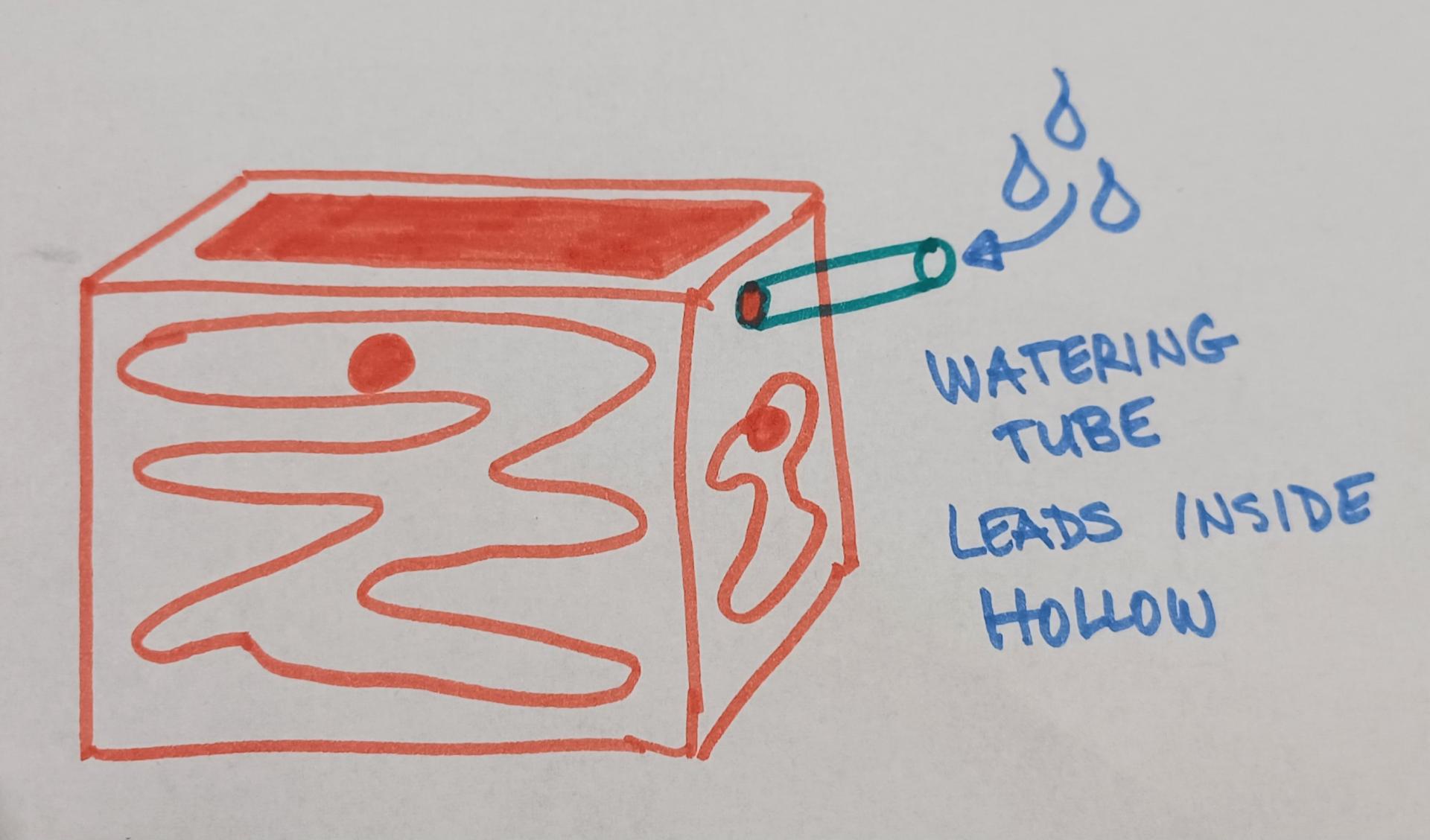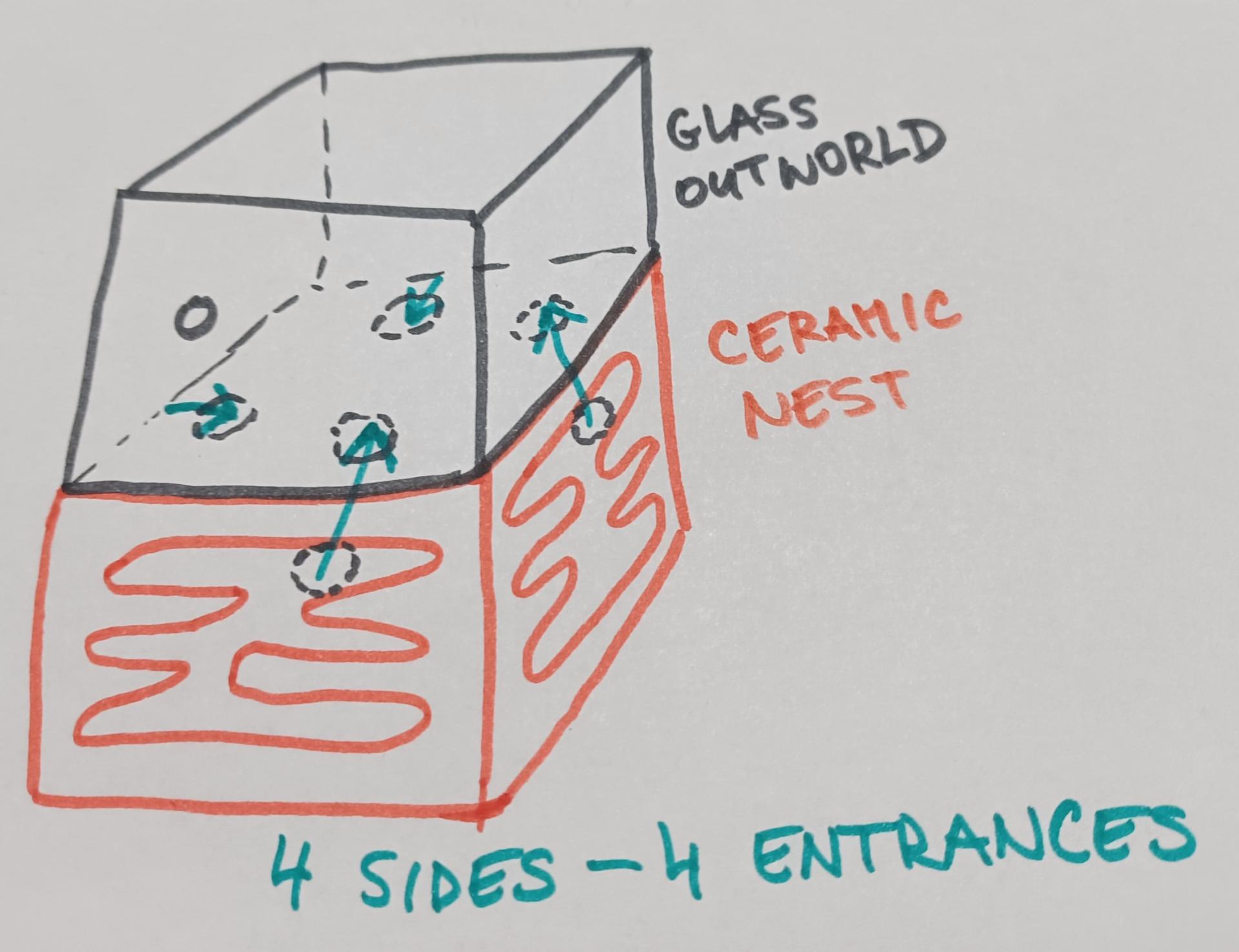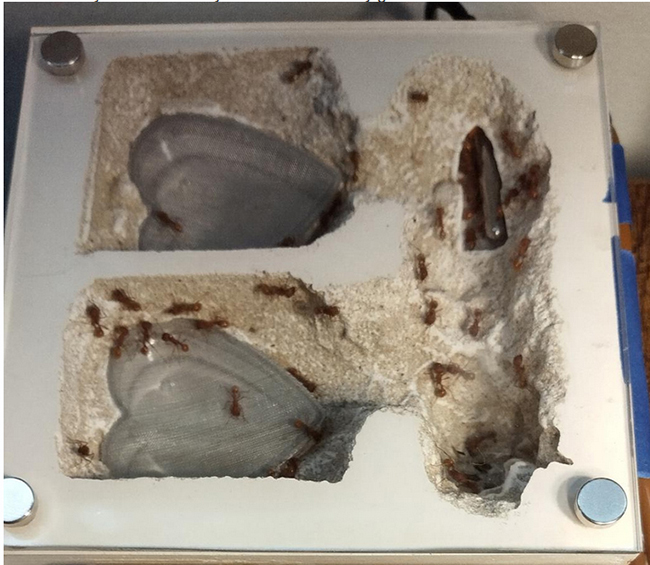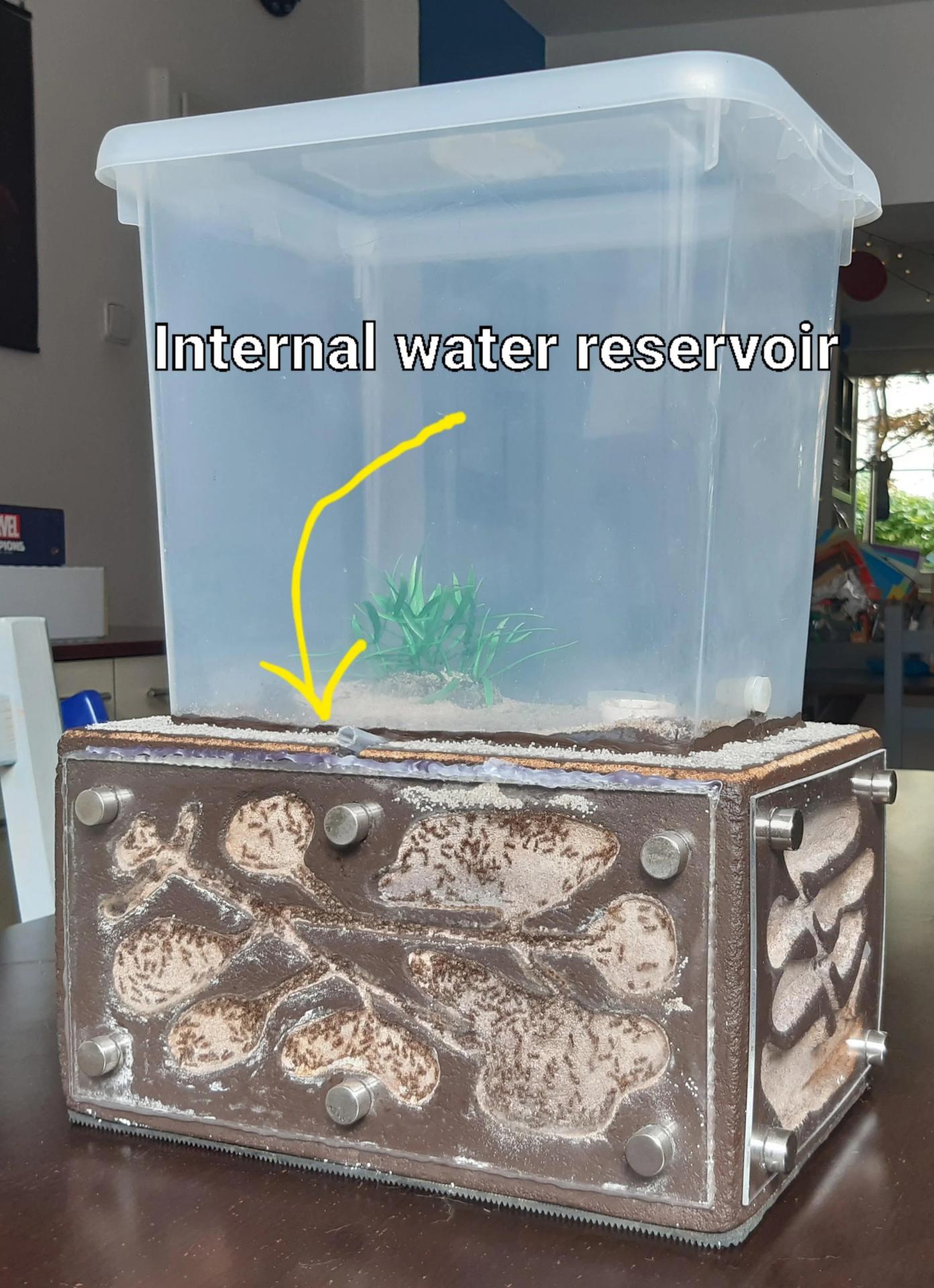I have been searching for a perfect material for building a formicarium nest. Something that is porous, absorbs water, is mold resistant, and chew resistant even for destructive species. I am planning a vertical nest - a cuboid with 3 or 4 vertical nest parts on the sides covered by glass panels (think THA).
Plaster gets moldy. Ytong is too soft and it is hard to cut perfectly flush with the glass. I wasn't able to mix a perfect concrete that would be both hard and absorbent. I have considered fired clay before (as it is absorbent and very hard), but pottery shrinks and warps while drying.
And then I got an idea: what if I cast pourable clay into a plaster mold. It would stay hollow, so it could be reasonably light and hydrating might be as easy as pouring water in the inside of the cuboid). Any technical ideas? Thoughts? Experience with similar experiments?
Edited by Nixionika, March 5 2024 - 3:12 AM.




























